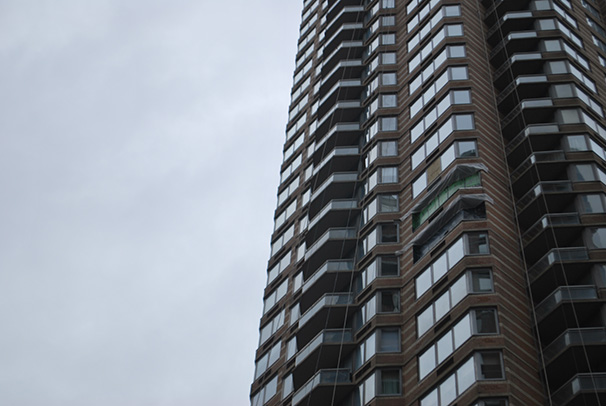
As NYU students know, at the sound of a fire alarm, evacuation begins immediately. However, with the use of fire-resistant construction in modern high rises, evacuation is not always the best option in the event of a fire.
According to the New York City Building Code, several provisions must be followed in order for a building to be deemed fire-resistant. These buildings are made from materials that prevent or delay the spread of hot gas, heat and flames throughout the floors. In buildings that are fire-resistant, residents may be safer by staying in their apartments or rooms instead of evacuating.
This past January, a fire in a fire-resistant high rise in Hell’s Kitchen brought evacuation into question. A resident who was attempting to evacuate died from smoke inhalation. According to The New York Times, the resident would have survived if he had stayed in his home instead of leaving.
NYU has several modern high rises, such as Gramercy Green residence hall. However, the policy for students when a fire alarm goes off remains evacuation. Beth Morningstar, director of strategic assessment and communications in the office of the executive vice president at NYU, said the university’s policies on fire emergencies aligns with New York State education law, requiring college dorms to be evacuated when a fire alarm sounds. The practice of evacuating the building using the closest stairwell was developed with the NYU Environmental Health and Safety and the New York City Fire Department, explained Kate Baier, senior director of residential life.
“This policy covers all NYU residence halls, except for Brittany Hall,” Morningstar said. “The FDNY has approved a different fire alarm system for Brittany, which was recently renovated to include an installation of what is called a two-way voice fire alarm system.”
If the two-way system detects a fire, the alarms on the affected floor and those on the floors above and below go off. Only the residents on those floors are required to evacuate. Hayden residence hall will have a similar system installed while it is being renovated later this year.
CAS sophomore Ruby Zheng, who lived in the penthouse at Gramercy for her fall semester, described her experiences with building evacuations.
“The worst part was just that going down the stairs took a really long time, about 15 minutes,” Zheng said. “I’m not sure how that would play out in a real fire, but I don’t think it would be very safe.”
Stern sophomore and former Gramercy resident Jane Somuah expressed her view based on her experiences with building evacuations.
“I would say that I did feel safe living on the top floor,” Somuah said. “In the event that I would have been in the middle of an evacuation, I don’t think I would feel more or less safe than anyone else on any other floor.”
A version of this article appeared in the Tuesday, Feb. 4 print edition. Mariya Karcelova is a contributing writer. Email her at [email protected].






















































































































































